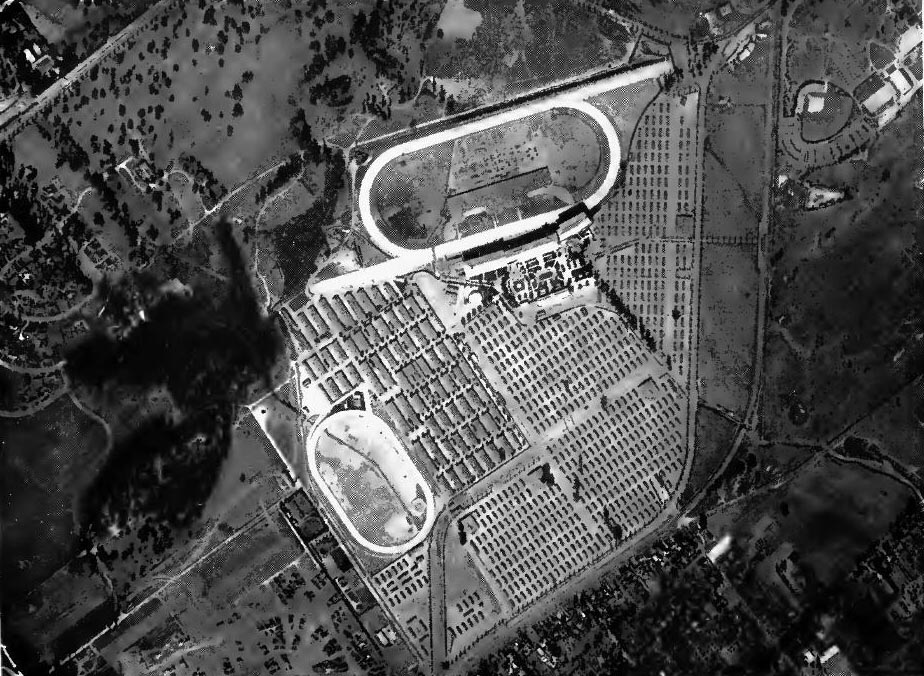
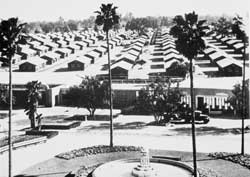
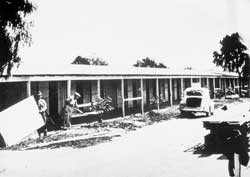
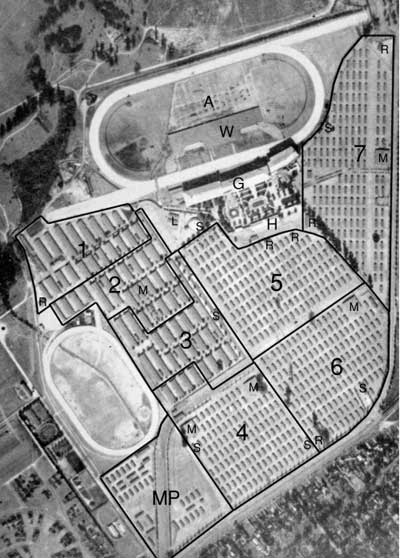
Since 1944 the 553.56 acre site has been privately and publically developed. No evidence exists to indicate that any residual eligible hazards are present at this time, nor does documented site history indicate that any eligible hazards ever existed. While there are no available records of the final disposition by the WAA of the 51 easements, 9 licenses, and 22 permits for the 5.698 acres plus "no area" interests, the extensive development since 1947 of streets, buildings, and 2 freeways (including Interstate Highway 10) along the 17.2 miles of property provides adequate evidence that the WAA did dispose of it after 1947 and that the government no longer has any interest in it.
Acquisition by the united states of the 553.56 acres was to establish first, a Japanese-American internment camp and then later, the santa Anita Ordnance Training Center. Acquisition of the 5.698 acres plus the "no area" interest was for improvement of the sewer to serve the facility.
The lease for 401.18 acres was terminated 10 September 1944. The leases for 152.38 acres (3 parcels) were terminated 15 December 1944. 6 "no area" permits were 'terminated 10 March 1945. On 15 April 1947 the 5.698 acres plus associated "no area" interests were transferred from the Army to the War Assets Administration (WAA). Presently the 553.56 acres houses the race track facility plus subsequent extensive private and public development of streets, utilities, buildings (hospital, fire station, regional shopping mall, medical office tower, Arcadia civic Center, and 100+ residences), and the Los Angeles County Arboretum. While no available records indicate WAA disposal of the 5.698 acres and "no area" interests, extensive subsequent development of streets, buildings, and 2 freeways (including Interstate Highway #10) along the 17.2 miles of property is evidence that the WAA did relinquish the government's former interest sometime following 15 April 1947.
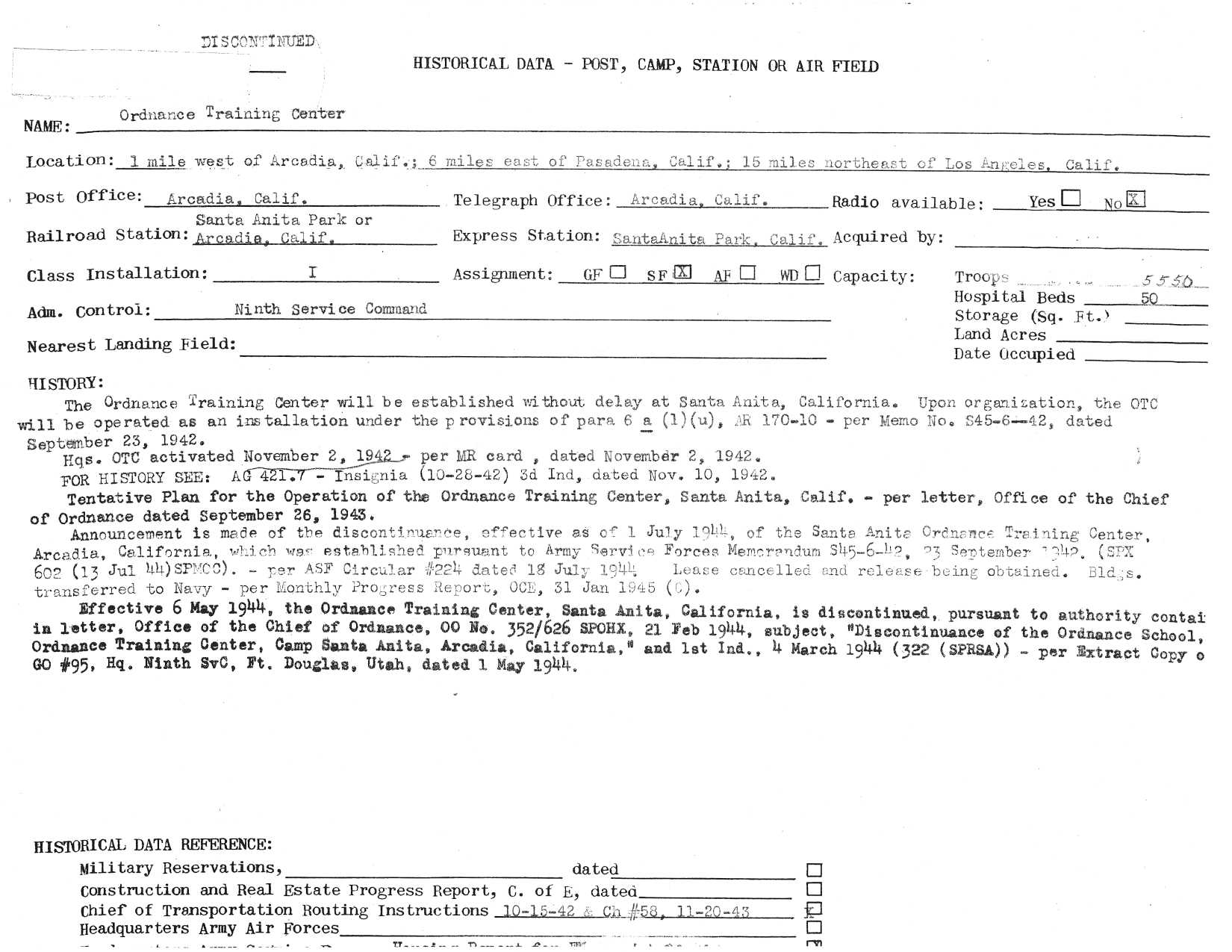
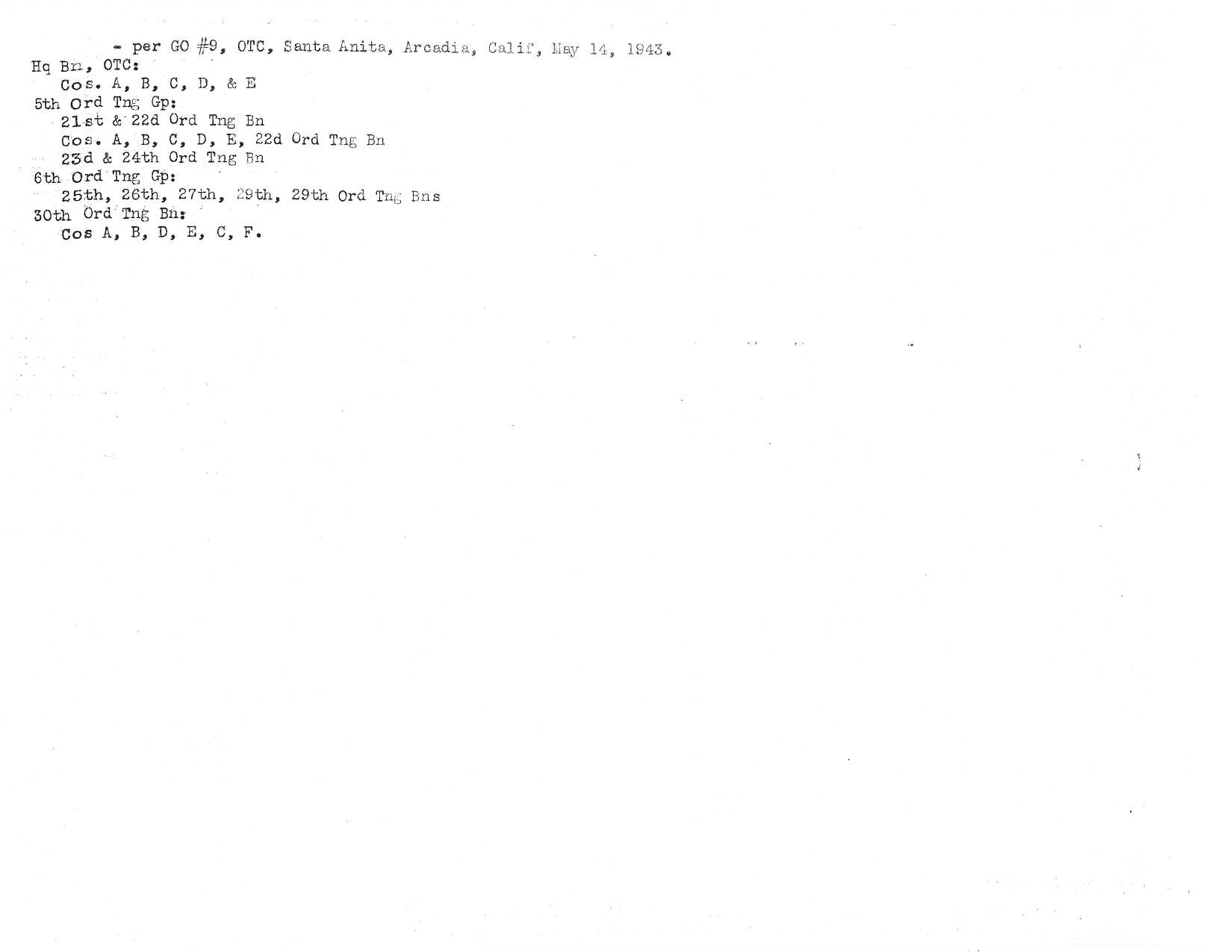
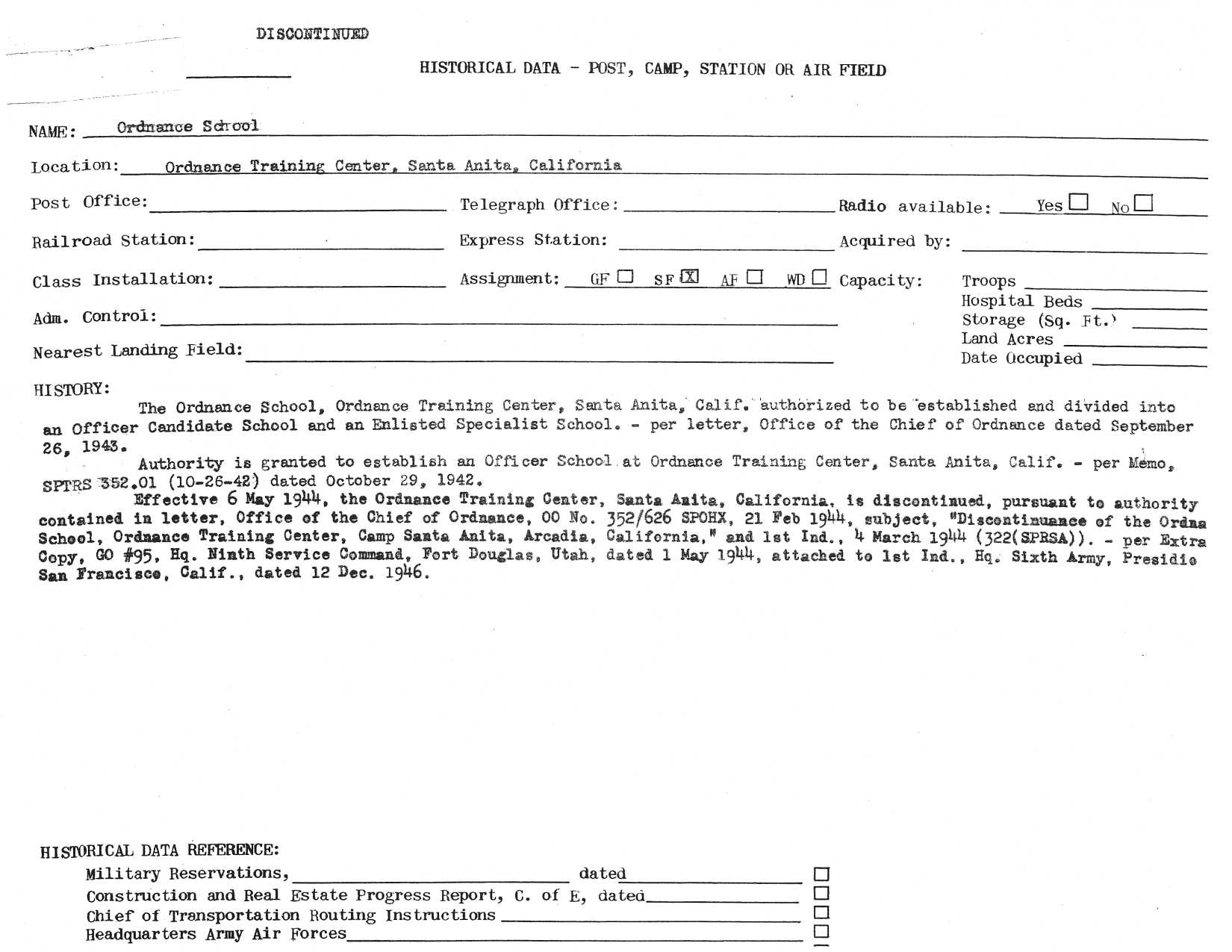
|
|
|
|
| Army of the United States Station List | 1 June 1943 |
|